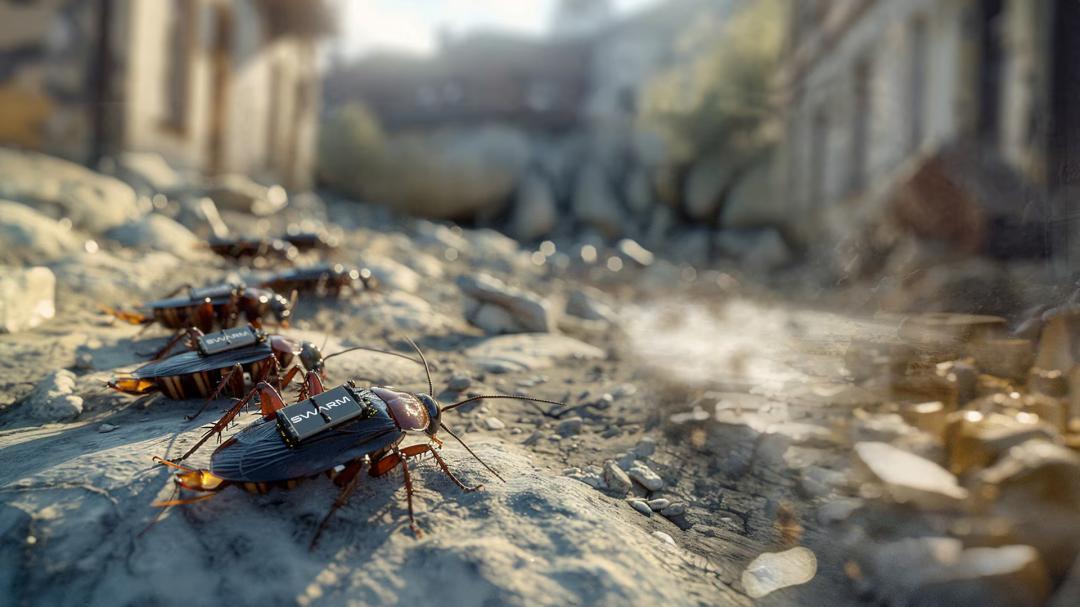
Cockroaches Equipped with Smart Backpacks to Act as Spy Robots
In a groundbreaking innovation, Germany’s Swarm Biotactics is developing a unique type of spy robot – live cockroaches fitted with smart backpacks. These backpacks are equipped with miniature cameras, sensors, and neural stimulation technology, enabling the cockroaches to be remotely controlled and deployed in swarms to collect real-time intelligence in hostile or hard-to-reach environments.
The project, which is still in its experimental phase, has been gaining attention globally for its potential to revolutionize the field of surveillance and military operations. According to a recent report by Reuters, Swarm Biotactics is planning to deploy these “spy cockroaches” in the near future, with a goal of integrating them into military operations by 2025.
So, how do these tiny robots work, and what makes them so special? Let’s dive deeper into the technology behind them.
The Smart Backpack
The smart backpack, developed by Swarm Biotactics, is a miniature device that can be attached to the cockroach’s body. It is equipped with a range of sensors and cameras that enable the cockroach to collect and transmit data in real-time. The backpack also contains neural stimulation technology, which allows it to control the cockroach’s movements and behavior.
The backpack is designed to be lightweight and compact, allowing it to be easily attached to the cockroach without restricting its movement. The device is powered by a small battery that can last for several hours, depending on the intensity of the mission.
Remote Control and Deployment
The smart backpack is equipped with a built-in communication system that allows it to transmit data to a central command center. The cockroach can be remotely controlled using a specialized software, which allows the operator to direct its movement and behavior.
The cockroach can be deployed in a variety of environments, from urban to rural areas, and can operate in a range of temperatures and humidity levels. The device is designed to be highly durable and can withstand harsh conditions, making it an ideal choice for missions in hostile or hard-to-reach areas.
Advantages Over Traditional Spy Technology
The use of cockroaches as spy robots offers several advantages over traditional spy technology. For one, they are highly affordable and can be mass-produced, making them an attractive option for military operations where budget is a concern.
Additionally, cockroaches are highly agile and can navigate through tight spaces, making them ideal for reconnaissance missions in urban environments. They are also highly resistant to environmental stress and can survive in extreme conditions, making them an attractive option for operations in hostile or hard-to-reach areas.
Potential Applications
The potential applications of these “spy cockroaches” are vast. They can be used for a range of purposes, from military operations to search and rescue missions. They can also be used for environmental monitoring, detecting pollution or monitoring wildlife populations.
In the military context, the cockroaches can be used for reconnaissance missions, detecting enemy positions, or monitoring the movement of troops. They can also be used for sabotage missions, detecting and disabling enemy equipment or infrastructure.
Ethical Concerns
While the use of cockroaches as spy robots offers several advantages, there are also ethical concerns that need to be addressed. Some critics have raised concerns about the use of live animals for military purposes, arguing that it is inhumane and unethical.
Additionally, there are concerns about the potential impact on the environment and ecosystems if the cockroaches are released into the wild. The device could potentially harm or disrupt natural populations, causing unintended consequences.
Conclusion
The development of cockroaches equipped with smart backpacks is a groundbreaking innovation that has the potential to revolutionize the field of surveillance and military operations. With their ability to collect real-time intelligence, navigate through tight spaces, and survive in extreme conditions, they offer a unique set of capabilities that traditional spy technology cannot match.
While there are ethical concerns that need to be addressed, the potential benefits of this technology make it an attractive option for military operations and environmental monitoring. As the technology continues to evolve, we can expect to see more innovative applications of this technology in the future.
News Source:






